#Natural Resources Conservation Service
Explore tagged Tumblr posts
Text













Latest for Audobon Society
Tricolored Blackbirds Once Faced Extinction—Here’s What’s Behind Their Exciting Comeback
For a decade Audubon California and partners have worked with farmers to delay harvests where the birds nest, solving what was once the biggest threat to the species.
Not long ago, dairy producers routinely motored their harvesters through fields where the blackbirds were nesting, sometimes killing thousands of flightless chicks in minutes. This carnage threatened the survival of the species, whose numbers, historically 2 million to 3 million, plunged through the 20th century, bottoming out at an estimated 145,000 in 2014.
Now a decade old, the initiative—which has received additional funding from the California Department of Fish and Wildlife—has probably prevented the deaths of at least half a million chicks. Last spring the buyout program protected an estimated 235,000 adults in San Joaquin Valley fields alone. This year’s preliminary tally sits at around 200,000 nesting adults. (Alastair Bland).
Read Article here:
#audobon#audobon society#dairy farm#tricolored blackbirds#triticale#natural resources conservation service
1 note
·
View note
Text
NTC and Community College Alliance to lead National Ag Education Consortium
This $9 million, four-year program aims to connect more students to agriculture career pathways.
WAUSAU – Northcentral Technical College, a founding member of the Community College Alliance for Agriculture Advancement, or C2A3, announced today a ground-breaking initiative with U.S. Department of Agriculture – Natural Resources Conservation Service to create a national agriculture center for two-year colleges. This $9 million, four-year program aims to connect more students to agriculture…
#Astrid Martinez#C2A3#Community College Alliance for Agriculture Advancement#Jeannie Worden#Northcentral Technical College#NTC#U.S. Department of Agriculture – Natural Resources Conservation Service#USDA’s Natural Resources Conservation Service
0 notes
Text
youtube
#youtube#militarytraining#Green Solutions#World Bank#Eco Solutions#Climate Change#Sustainability#Vietnam#War#Nature#Innovation#Technology#Military#Green Energy#Environment#US Army#Conservation#Renewable Resources#Development#International Affairs#Defense#Nature-Based Solutions#International Cooperation#U.S. Army Corps of Engineers#Environmental Protection#Resilience#Green Building#Ecosystem Services#Renewable Energy#Engineering
0 notes
Text
Sun in houses of Fama(408) Persona Chart


Other related post you might like:
🪄🪄🪄🪄🪄🪄🪄🪄🪄🪄
Planets in houses of Union persona chart
Sun
Moon
---------------------------------------★★
Astro observation 1
Astro observation 2
✨✨✨✨✨✨✨✨✨✨✨✨✨✨✨✨
Groom Persona Chart
Sun
Moon
Mercury
Venus
Mars
Pluto
♦️♦️♦️♦️♦️♦️♦️♦️♦️♦️♦️♦️♦️♦️♦️
Synastry/Composite Chart Observations 1
Review of my readings-1
-------*****----*****--------------*****--------
[PS: These are my personal observations. For entertainment purposes only. Have fun.]


1st House:
Your personal charisma and individuality are the focal points of fame. You are a natural-born leader whose confidence and presence draw attention. Fame is achieved through authenticity and being unapologetically yourself. People are inspired by your courage and personality, making you a trailblazer in your field. However, this placement can attract both admirers and critics, requiring a strong sense of self to handle the spotlight.
2nd House:
Fame comes from wealth, values, or material accomplishments. You may be popular for your capability to create income or for your special manner of handling money. Your talents, especially in creative or entrepreneurial endeavors, can bring fame. Stability and self-esteem are an important part of maintaining publicity. Fame may also be a result of advocating issues on financial literacy or sustainability.
3rd House:
Your fame comes from communication, teaching, or writing. You are popular because of your intelligence, wit, or ability to simplify a complex issue. Social media, public speaking, or journalism may be the source of your popularity. Relationships with siblings, neighbors, or communities will also contribute to your fame. This placement accentuates how your words have the power to inspire and influence the masses.
4th House:
Fame can be due to family history, property, or service to the family and community. You can also be noted for the conservation of traditional knowledge or service to the family or the environment. The fame is very personal and can happen later in your life. You must be very attached to your origins and be emotionally strong to carry your public persona.
5th House:
You are destined for fame in creative fields like acting, music, or art. Your playful, romantic, or dramatic nature captivates audiences. Fame might also come through children, teaching, or entertainment industries. Your ability to inspire joy and creativity in others is unparalleled. This is a highly favorable placement for widespread recognition, but it requires balancing indulgence with responsibility.
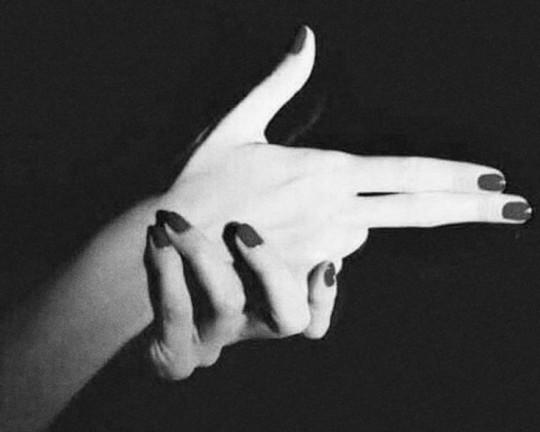
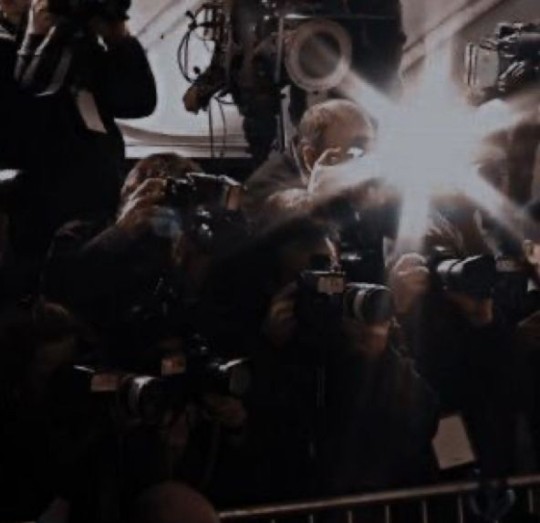
6th House:
Fame comes through hard work, service, or contributions to health and wellness. You might be recognized as a reformer in your workplace or as a healer. Your meticulous attention to detail sets you apart. Fame could stem from achievements in medicine, fitness, or other service-oriented fields. Although the spotlight may feel like a byproduct of your dedication, it ultimately serves a greater purpose.
7th House:
Your reputation may be connected with partnerships or marriage. You can be renowned through a partner, your teamwork, or by fighting for fairness and peace. The way you smooth things over can bring you fame, your appeal, or legal expertise. Partnership is one of your strong points, and people know you as a peacemaker in conflicts or arguments.
8th House:
Fame can come through transformation, taboo subjects, or working with other people's resources. You may be famous for your profundity, mysticism, or ability to uncover that which is hidden. You could even be famous in the realms of psychology, finance, or esoteric studies. Your mysterious nature and the fact that you are willing to discuss life's shadowy areas makes you memorable. This position often provides a transformative public journey.
9th House:
Recognition comes through travel, education, philosophy, or religion. Fame might be tied to teaching, writing, or promoting cultural or spiritual awareness. You are seen as a visionary or a guide who inspires others to expand their horizons. Fame here often comes with international acclaim or through ventures that connect different cultures.
10th House:
This is the traditional placement of Leo for fame and a public career. There, you dazzle others with leadership roles, where accomplishments come out in big ways, including places like politics, business, and professional work that places a demand for visibility. You have won the confidence of all as an icon commanding respect and authority figures. There's a saying, "Your integrity and ethic ensure that this is remembered over the course of time."
11th House:
Fame comes through your associations with groups, organizations, or humanitarian work. You're hailed as a champion for social causes and new developments. You can also become famous through science, technology, or activism. The need to connect through networking and collaborations aids your impact. Your connection to people on a mass scale guarantees you mass recognition.
12th House:
Your fame is spiritual or mystical. You may become famous for spiritual or creative work that affects people's subconscious mind. You can also be considered famous after your death when your work is recognized after your lifetime. This placement typically indicates fame that is associated with retreat, healing, or sacrifice to a cause.
#astro community#astro observations#astrology#astro notes#persona chart#birth chart#horoscope#fama#fama persona chart
418 notes
·
View notes
Text
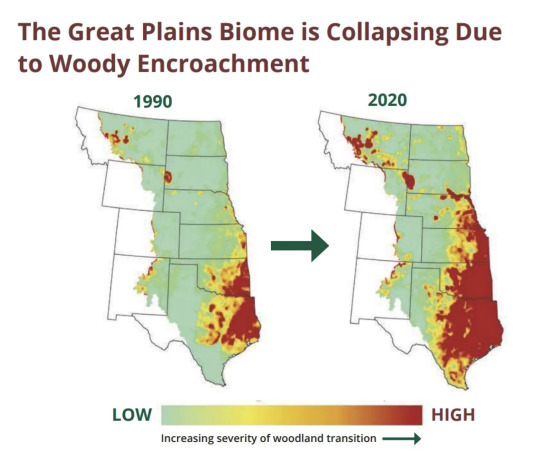
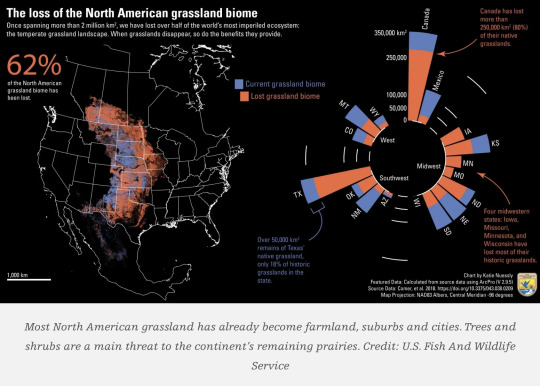
Excerpt from this story from Science Friday:
Flint Hills rancher Daniel Mushrush estimates that his family has killed maybe 10,000 trees in the past three years.
It’s a start. But many more trees still need to fall for the Mushrushes to save this 15,000 acres of rare tallgrass prairie.
Whenever other work on the property can wait, Daniel and his brother, Chris, don helmets and earplugs, grab their tools and pick up where they left off.
“It’s a lot of old-fashioned chainsaw work,” Daniel Mushrush said. “Walking rocky ridges and cutting down trees.”
The Mushrush family is beating back a juggernaut unleashed by humans — a Green Glacier of trees and shrubs grinding slowly across the Great Plains and burying some of the most threatened habitat on the planet.
This blanket of shrublands and dense juniper woods gobbling up grassland leads to wildfires with towering flames that dwarf those generated in prairie fires.
It also eats into ranchers’ livelihoods. It smothers habitat for grassland birds, prairie fish and other critters that evolved for a world that’s disappearing. It dries up streams and creeks. New research even finds that, across much of the Great Plains, the advent of trees actually makes climate change worse.
Now a federal initiative equips landowners like Mushrush with the latest science and strategies for saving rangeland, and money to help with the work.
Satellite imagery and a better understanding of how trees and shrubs spread could help landowners replace a losing game of whack-a-mole with a more systematic course.
Mushrush calls the approach, promoted by the Natural Resources Conservation Service’s Great Plains Grassland Initiative with guidance from the University of Nebraska-Lincoln, a morale builder.
“It works,” the third-generation rancher said. “We’re still overwhelmed with how to do this on 15,000 acres — but we have a plan.”
Each time he thinks about the Manhattan area, which is much more infested with juniper woods and seas of sumac, wild plum and dogwood thickets, he feels the threat creeping toward his home in Chase County.
“If a coral reef is worth saving, if some pristine mountain stream is worth saving, then so are the Flint Hills,” he said. “It’s not easy work, but it’s worthy work.”
547 notes
·
View notes
Text
Note: Reasons to Be Cheerful has had weirdly huge formatting issues for the past six or so months, so if that version is a mess, this link should work better.
"Florida Power & Light Company (FPL), the Sunshine State’s largest power utility, employs all the people you might expect: electricians, lineworkers, mechanical engineers — and a few you might not. For over 40 years, the company has kept a team of wildlife biologists on staff. Their task? Monitoring the giant carnivorous reptiles that reside in one of the state’s nuclear power plants.
Saving the American Crocodile
What sounds like a low-budget creature feature is actually a wildly successful conservation story. It goes like this: In 1975, the shy and reclusive American crocodile was facing extinction. Over-hunting and habitat decline caused by encroaching development had pushed its numbers to a record low. By 1975, when it was listed as endangered under the Endangered Species Act, there were only 200 to 300 left.
Three years later, in 1978, workers at the Turkey Point nuclear power plant in Homestead, Florida happened upon something that must have made them gasp: a crocodile nest along one of the plant’s 5,900-acre “cooling canals.” Rather than drive the crocs away — perhaps the easiest solution — FPL hired a team of biologists and implemented a Crocodile Management Plan. Its goal was unconventional: provide a suitable habitat for the crocs within the workings of the nuclear power plant, allowing both to coexist.
Over the course of the next 30 years, FPL’s wildlife biologists monitored nests, tagged hatchlings and generally created a hospitable environment for the reptiles. As it turned out, the plant’s cooling canals provided an ideal habitat: drained earth that never floods on which to lay eggs directly adjacent to water. Over the years, more and more crocs made the cooling canals home. By 1985, the nests at Turkey Point were responsible for 10 percent of American crocodile hatchlings in South Florida. In 2007, the U.S. Fish and Wildlife Service downgraded the American crocodile’s status from endangered to threatened, singling out FPL for its efforts.
The program continues to this day. To date, biologists have tagged some 7,000 babies born at the plant. In 2021, there were a record-setting 565 crocodile hatchlings at the Turkey Point facility.
"Reconciliation Ecology"
Turkey Point’s efforts are an example of what is known in the conservation world as “reconciliation ecology.” Rather than create separate areas where nature or animals can thrive in isolation from humans, reconciliation ecology suggests that we can blend the rich natural world with the world of human activity. Michael Rosenzweig, an emeritus professor of ecology and evolutionary biology at the University of Arizona, was a leading force in establishing this concept. The author of Win-Win Ecology: How the Earth’s Species can Survive in the Midst of Human Enterprise, Rosenzweig has pointed out that although human encroachment has typically been considered a threat to biodiversity, the notion that the world must be either “holy” or “profane,” ecologically speaking, is simply not true.
“In addition to its primary value as a conservation tool, reconciliation ecology offers a valuable social byproduct,” writes Rosenzweig in his first chapter. “It promises to reduce the endless bickering and legal wrangling that characterize environmental issues today.”
-via Reasons to Be Cheerful, May 5, 2022. Article continues below. All headings added by me for added readability.
Dr. Madhusudan Katti, an associate professor in the Department of Forestry and Environmental Resources at North Carolina State University, was inspired by Rosenzweig when he did his postdoc at Arizona State. Katti has now been in the field of reconciliation ecology for two decades and teaches classes on the subject. “To me it’s finding solutions to reconciling human development with biodiversity conservation,” Katti says.
This common ground between development and conservation can be consciously planned, like FPL managing a crocodile habitat at a nuclear power plant or the state-sponsored vertical gardens and commercial farms on high-rise buildings in Singapore. Other examples include the restoration of the coral reef around an undersea restaurant in Eilat, Israel, or recent legislation in New York City requiring patterned glass on high-rise buildings, making windows more visible to migratory birds. Other planned examples of reconciliation ecology can be more individually scaled: a rooftop garden in an urban setting, modifying your garden to earn a “backyard bird habitat” certification from the Audubon Society, or even just mowing your lawn less often...
Reconciliation Ecology: Nature's Already Doing It Without Us
But there are countless examples of “accidental” incidents of reconciliation ecology, as well. One of Katti’s favorites is the kit fox of California’s San Joaquin Valley. “The kit fox was one of the very first species listed on the Endangered Species Act,” Katti says. Its decline was caused by habitat loss through agricultural and industrial development, as well as the extermination of the gray wolf population, which led to an increase in coyotes. So kit foxes adapted and moved to new habitats. One of these was the city of Bakersfield, California.
“Bakersfield, surrounded by oil pumps, would be the last place you’d expect to find an endangered species,” Katti says. But researchers think kit foxes have migrated to Bakersfield because they actually have more protection there from predators like coyotes and bobcats. “The kit foxes have figured out that if they can tolerate the human disturbance and live with people, then they are safer from all these other predators,” he says.
Living in the city has led to some interesting behavioral changes. In the wild, for instance, a female kit fox gives birth to her young and raises them by herself in a den. But in the city, researchers have observed multiple females raising their litters together in the same den. “It’s like a form of cooperative breeding,” Katti says. “That wouldn’t happen in the wild.” ...
The Big Picture: How We Think about Conservation
Reconciliation Ecology isn’t just we humans welcoming animals like crocodiles and foxes into our environments, though. It’s also living with nature in a way that most Western societies haven’t done since the Enlightenment. “In recent years, there’s been a recognition that the ‘fortress conservation’ model — keeping nature separated from humans and not thinking of or valuing human-inhabited landscapes — those ideas are outdated,” says Katti.
In fact, in Katti’s classes on reconciliation ecology, he embraces the notion of reconnecting people with their land if they have been unjustly separated from it. “The term reconciliation also applies to all the colonial legacies where both nature and people have been harmed,” Katti says. “For Indigenous communities, the harm done to ecosystems, it’s happened together. So you can talk about addressing both. That’s where a lot of my thinking is at the moment.”
A hopeful version of this sort of reconciliation is happening in California where colleagues of Katti’s who are tribal members are re-introducing “tribal burns” in some areas. Controlled burns have been a part of many Indigenous cultures for millenia, both as a way to prevent devastating forest fires, but also to encourage the growth of certain plants like hazel that are used for basket-weaving and other crafts.
“The notion that people don’t belong there and ‘let nature take care of itself’ doesn’t really work,” Katti says. “That’s the legacy of Western European Enlightenment thinking — a divide between human and nature. That is a real faulty view of nature. People have been part of the ecosystem forever.”
-via Reasons to Be Cheerful, May 5, 2022
#a bit older but still ongoing/relevant and still very cool#florida#crocodile#reptile#ecology#environment#sustainability#endangered species#united states#california#kit fox#nuclear power plant#reconciliation#colonialism#the enlightenment#conservation#human beings#good news#hope#urban ecology
2K notes
·
View notes
Text
A woman without biologicalchildren is running for high political office, and so naturally that quality will at some point be used against her. Kamala Harris has, in the short period since she emerged as the Democratic candidate for US president, been scrutinised over her lack of children. The conservative lawyer Will Chamberlain posted on X that Harris “shouldn’t be president” – apparently, she doesn’t have “skin in the game”. The Republican vice-presidential candidate, JD Vance, called Harris and other Democrats “a bunch of childless cat ladies miserable at their own lives”.
It’s a particularly virulent tendency in the US, with a rightwing movement that is fixated on women’s reproduction. But who can forget (and if you have, I am happy to remind you of a low point that still sticks in my craw) Andrea Leadsom, during the 2016 Conservative party leadership election, saying that Theresa May might have nieces and nephews, but “I have children who are going to have children … who will be a part of what happens next”. “Genuinely,” she added, as if the message were not clear enough, “I feel that being a mum means you have a real stake in the future of our country, a tangible stake.”
It’s an argument about political capability that dresses up a visceral revulsion at the idea that a woman who does not have a child should be vested with any sort of credibility or status. In other comments, Vance said that “so many of the leaders of the left, and I hate to be so personal about this, but they’re people without kids trying to brainwash the minds of our children, that really disorients me and disturbs me”. He appears so fixated on this that it is almost comical: a man whose obsession with childless women verges on a complex.
But his “disorientation and disturbance” is a political tendency that persists and endures. It constantly asks the question of women who don’t have children, in subtle and explicit ways, especially the higher they rise in the professional sphere: “What’s up with that? What’s the deal?” The public sphere becomes a space for answering that question. Women perform a sort of group plea to be left the hell alone, in their painstaking examinations of how they arrived at the decision not to have kids, or why they in fact celebrate not having kids, or deliberations on ambivalence about having kids.
Behind all this lies some classic old-school inability to conceive of women outside mothering. But one reason this traditionalism persists in ostensibly modern and progressive places is that women withdrawing from mothering in capitalist societies – with their poorly resourced public amenities and parental support – forces questions about our inequitable, unacknowledged economic arrangements. A woman who does not bear children is a woman who will never stay home and provide unremunerated care. She is less likely to be held in the domestic zone and extend her caregiving to elderly relatives or the children of others. She cannot be a resource that undergirds a male partner’s career, frailties, time limitations and social demands.
A mother is an option, a floating worker, the joker in the pack. Not mothering creates a hole for that “free” service, which societies increasingly arranged around nuclear families and poorly subsidised rights depend on. The lack of parental leave, childcare and elderly care would become profoundly visible – “disorienting and disturbing” – if that service were removed.
“Motherhood,” writes the author Helen Charman in her new book Mother State, “is a political state. Nurture, care, the creation of human life – all immediate associations with mothering – have more to do with power, status and the distribution of resources … than we like to admit. For raising children is the foundational work of society, and, from gestation onward, it is unequally shared.”
Motherhood, in other words, becomes an economic input, a public good, something that is talked about as if the women themselves were not in the room. Data on declining birthrates draws comment from Elon Musk (“extremely concerning!!”) . Not having children is reduced to entirely personal motivations – selfishness, beguilement with the false promise of freedom, lack of values and foresight, irresponsibility – rather than external conditions: of the need for affordable childcare, support networks, flexible working arrangements and the risk of financial oblivion that motherhood frequently brings, therefore creating bondage to partners. To put it mildly, these are material considerations to be taken into account upon entering a state from which there is no return. Assuming motherhood happens without such context, Charman tells me, is a “useful fantasy”.
It is a binary public discourse, obscuring the often thin veil between biological and social actualisation. Women who don’t have children do not exist in a state of blissful detachment from their bodies and their relationship with maternity: a number have had pregnancies, miscarriages, abortions and periods. A number have entered liminal stages of motherhood that don’t conform to the single definition from which they are excluded. A number extend mothering to various children in their lives. Some, like Harris herself, have stepchildren (who don’t count, just as May’s nieces and nephews didn’t). A number have become mothers, just not in a way that initiates them into a blissful club. They experience regret, depression and navigate unsettlement that does not conform to the image of uncomplicated validation of your purpose in life.
But the privilege of those truths cannot be bestowed on creatures whose rejection of the maternal bond has become a rejection of a wider unspoken, colossally unfair contract. Women with children are handed social acceptance for their vital investment in “the future”, in exchange for unrewarded, unsupported labour that props up and stabilises the economic and social status quo. All while still suffering sneeriness about the value of their work in comparison with the serious graft of the men who win the bread.
On top of that, women have to navigate all that motherhood – or not – entails, all the deeply personal, bewildering, isolating and unacknowledged realities of both, while being subject to relentless suffocating, infantilising and violating public theories and notions that trespass on their private spaces. With that comes a sense of self-doubt and shame in making the wrong decision, or not being as content with those decisions as they are expected to be. It is a constant, prodding vivisection. That, more than anything clinical observers feel, is the truly disorienting and disturbing experience.
181 notes
·
View notes
Text
Originally I had attached these tags about British imperial forestry to a post about United States treatment of forests, Indigenous peoples, and land administration from 1900-ish to 1935-ish, during a transition period when clear-cutting logging was threatening profit so the US turned to a German- and British-influenced "sustained yield" forestry paradigm:

And in response, someone added:
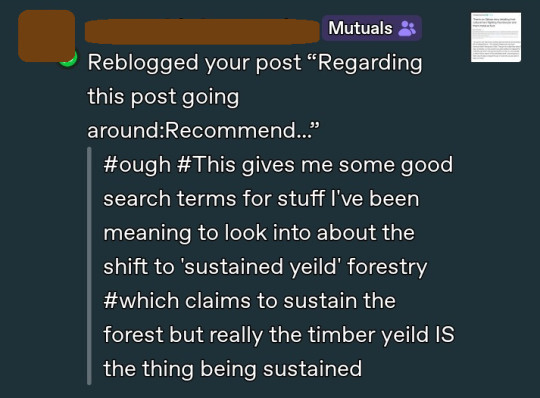
In the midst of the first Empire Forestry Conference of scientists, academics, and administrators in 1920, the chairman of the Forestry Commission of Britain, Lord Lovat, said that forests were "grown for use and not for mere ornament ... Forests are national assets only so far as they supply the raw material for industrial development."
Rajan (in Modernizing Nature) directly quotes professor of forestry at Oxford, R.S. Troup, who had been influential in the Indian forest service; at the same forestry conference in 1920, Troup promoted sustained yield like this: "Conservation was a 'wise and necessary measure' but it was 'only a stage towards the problem of how best to utilise the forest resources of the empire'. The ultimate ideal was economic management [...], which regarded forests as capital assets, fixed annual yields in such a manner as to exploit 'to the full interest on this capital [...]' and aimed for equal annual yields so as to sustain the market and provide regular supplies of timber to industry."
One of the big - and easily accessible/readable - summaries of the shift to sustained yield and rise of US and British administrators embracing "economic management" of forests:
Modernizing Nature: Forestry and Imperial Economic Development, 1800-1950. S. Ravi Rajan. 2006.
Concise look at the trajectory from East India Company and Royal Navy timber reserves; to British foresters training in Germany and/or in German traditions (including sustained yield) before joining as officers in the powerful British-Indian land administration bureaucracy; to US scientists being trained by those British administrators; to 1920s/1930s Empire Forestry Conferences promoting industry while identifying forests as essential to power.
---
This has also been covered by:
Vinita Damodaran, Richard Grove, Jeyamalar Kathirithamby-Wells, Jonathan Saha, Gregory Barton, Rohan D'Souza.
More summaries of the situation (shorter length, accessible):
"Imperial Environmentalism or Environmental Imperialism? European Forestry, Colonial Forests and the Agenda of Forest Management in the British Empire, 1800-1900". S. Ravi Rajan, In: Nature and Orient: Essays on Environmental History of South and South East Asia, 1998.
"'Dominion over palm and pine': the British Empire forestry conferences, 1920-1947". J.M. Powell, Journal of Historical Geography, Volume 33, Issue 4, October 2007.
Elsewhere, Elizabeth DeLoughrey and George Handley described it like this: 'These forest reserves [...] did not necessarily represent "an atavistic interest in preserving the 'natural' [...]" but rather "a more manipulative and power-conscious interest in constructing new landscapes [...]."' While Sharae Deckard adds: '[T]he subversive potential of the "green" critique [...] was defused by the extent to which growing environmental sensibilities enabled imperialism to function more efficiently by appropriating botanical knowledge and indigenous conservation methods [...].'
---
And the book:
Commonwealth Forestry and Environmental History: Empire, Forests and Colonial Environments in Africa, the Caribbean, South Asia and New Zealand.
Edited by Damodaran and D'Souza, with work from conferences hosted by Grove, in 19 chapters including:
"Worlds Apart? The Scottish Forestry Tradition and the Development of Forestry in India" (K. Jan Ootheok); "Redeeming Wood by Destroying the Forest: Shola, Plantations and Colonial Conservancy on the Nilgiris in the Nineteenth Century" (Deborah Sutton); "Nature's Tea Bounty: Plant Colonialism and 'Garden' Capitalism in the British Empire" (Jayeeta Sharma); "Industrialized Rainforests: The Ecological Transformation of the Sri Lankan Highlands, 1815-1900"; "Forestry and Social Engineering in the Miombo Woodlands of South-Eastern Tanganyika" (Thaddeus Sunseri)
---
Rajan also points out (again in Modernizing Nature):
"[An] extremely important aspect to the repackaging [of forestry science and management] [...] [and] a critical principle that stands out here is that of sustained yield, or sustainability (Nachhaltigekeit). This concept was fundamental [...]. By the turn of the [twentieth] century a large pan-colonial [British-United States] scientific community was in existence, trained in the German and French tradition of forestry [...]. Following the revolt of 1857, the government of [British] India sought to pursue active interventionist policies [...]. Experts were deployed as 'scientific soldiers' [...]. Dietrich Brandis [...], considered the founder of Indian forestry [...] married Rachel Marshman, who was [...] also the sister of the wife of General Havelock, a close friend of Lord Dalhouse, the then governor-general of India. On Havelock's recommendation, Brandis was put in charge of the forests of [...] Burma [...] and was subsequently appointed inspector-general of forests of India. [...] He also trained prospective foresters of the forest department of the USA, including Gifford Pinchot. [...] Chancellor Bismarck gave the visiting British Prime Minister Gladstone an oak sapling [...]. Prussia prided itself on helping devise [...] modern forest management. [...] [T]he Forestry Commision [...], [or] [t]he Imperial Visionaries, as they became known, believed that an increase in primary production in the tropical dependent empire would result in the growth of the British economy. [...] They deemed their own job to be serving the imperial economy."
---
And also:
Empire Forestry and the Origins of Environmentalism. GA Barton, 2002.
"Colonialism and Green Science: History of Colonial Scientific Forestry in South India, 1820-1920". VM Ravikumar Vejendala, Indian Journal of History of Science, 47:2, pages 241-259, 2012.
"Imperialism, Intellectual Networks, and Environmental Change: Unearthing the Origins and Evolution of Global Environmental History." Vinitia Damodaran and Richard Grove, in Nature's End: History and the Environment, 2009.
"The Reconfiguration of Scientific Career Networks in the Late Colonial Period: The Case of Food and Agriculture Organization and the British Colonial Forestry Service" by Jennifer Gold, and "A Network Approach to the Origins of Forestry Education in India, 1855-1885" by Brett M. Bennett. Both chapters are form Science and Empire, 2011.
Triumph of the Expert: Agrarian Doctrines of Development and the Legacies of British Colonialism. Joseph Morgan Hidge, in Series in Ecology and History, 2007.
Nature and Nation: Forests and Development in Peninsular Malaysia. Jeyamalar Kathirithamby-Wells, 2005. And also: "Peninsular Malaysia in the context of natural history and colonial science." Jeyamalar Kathirithamby-Wells, New Zealand Journal of Asian Studies, Volume 11, Number 1, 2009.
"Empires of Forestry: Professional Forestry and State Power in Southeast Asia, Part 1". Peter Vandergeest and Nancy Lee Peluso, Environment and History 12, no. 1, pages 31-64, February 2006.
#tidalectics#ecologies#multispecies#geographic imaginaries#indigenous#elizabeth deloughrey#british imperial forestry#british empire in south asia#indigenous pedagogies#kathryn yusoff#black methodologies
115 notes
·
View notes
Text
Existence Value: Why All of Nature is Important Whether We Can Use it or Not
I spend a lot of time around other nature nerds. We’re a bunch of people from varying backgrounds, places, and generations who all find a deep well of inspiration within the natural world. We’re the sort of people who will happily spend all day outside enjoying seeing wildlife and their habitats without any sort of secondary goal like fishing, foraging, etc. (though some of us engage in those activities, too.) We don’t just fall in love with the places we’ve been, either, but wild locales that we’ve only ever seen in pictures, or heard of from others. We are curators of existence value.
Existence value is exactly what it sounds like–something is considered important and worthwhile simply because it is. It’s at odds with how a lot of folks here in the United States view our “natural resources.” It’s also telling that that is the term most often used to refer collectively to anything that is not a human being, something we have created, or a species we have domesticated, and I have run into many people in my lifetime for whom the only value nature has is what money can be extracted from it. Timber, minerals, water, meat (wild and domestic), mushrooms, and more–for some, these are the sole reasons nature exists, especially if they can be sold for profit. When questioning how deeply imbalanced and harmful our extractive processes have become, I’ve often been told “Well, that’s just the way it is,” as if we shall be forever frozen in the mid-20th century with no opportunity to reimagine industry, technology, or uses thereof.

Moreover, we often assign positive or negative value to a being or place based on whether it directly benefits us or not. Look at how many people want to see deer and elk numbers skyrocket so that they have more to hunt, while advocating for going back to the days when people shot every gray wolf they came across. Barry Holstun Lopez’ classic Of Wolves and Men is just one of several in-depth looks at how deeply ingrained that hatred of the “big bad wolf” is in western mindsets, simply because wolves inconveniently prey on livestock and compete with us for dwindling areas of wild land and the wild game that sustained both species’ ancestors for many millennia. “Good” species are those that give us things; “bad” species are those that refuse to be so complacent.
Even the modern conservation movement often has to appeal to people’s selfishness in order to get us to care about nature. Look at how often we have to argue that a species of rare plant is worth saving because it might have a compound in it we could use for medicine. Think about how we’ve had to explain that we need biodiverse ecosystems, healthy soil, and clean water and air because of the ecosystem services they provide us. We measure the value of trees in dollars based on how they can mitigate air pollution and anthropogenic climate change. It’s frankly depressing how many people won’t understand a problem until we put things in terms of their own self-interest and make it personal. (I see that less as an individual failing, and more our society’s failure to teach empathy and emotional skills in general, but that’s a post for another time.)
Existence value flies in the face of all of those presumptions. It says that a wild animal, or a fungus, or a landscape, is worth preserving simply because it is there, and that is good enough. It argues that the white-tailed deer and the gray wolf are equally valuable regardless of what we think of them or get from them, in part because both are keystone species that have massive positive impacts on the ecosystems they are a part of, and their loss is ecologically devastating.
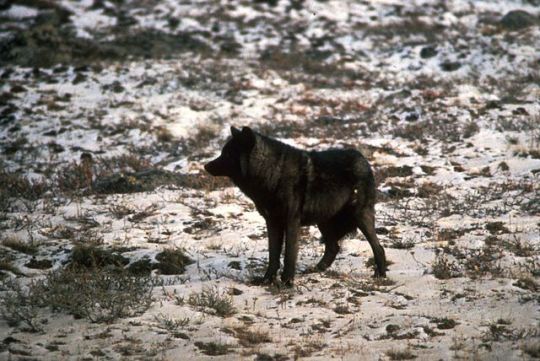
But even those species whose ecological impact isn’t quite so wide-ranging are still considered to have existence value. And we don’t have to have personally interacted with a place or its natural inhabitants in order to understand their existence value, either. I may never get to visit the Maasai Mara in Kenya, but I wish to see it as protected and cared for as places I visit regularly, like Willapa National Wildlife Refuge. And there are countless other places, whose names I may never know and which may be no larger than a fraction of an acre, that are important in their own right.
I would like more people (in western societies in particular) to be considering this concept of existence value. What happens when we detangle non-human nature from the automatic value judgements we place on it according to our own biases? When we question why we hold certain values, where those values came from, and the motivations of those who handed them to us in the first place, it makes it easier to see the complicated messes beneath the simple, shiny veneer of “Well, that’s just the way it is.”
And then we get to that most dangerous of realizations: it doesn’t have to be this way. It can be different, and better, taking the best of what we’ve accomplished over the years and creating better solutions for the worst of what we’ve done. In the words of Rebecca Buck–aka Tank Girl–“We can be wonderful. We can be magnificent. We can turn this shit around.”
Let’s be clear: rethinking is just the first step. We can’t just uproot ourselves from our current, deeply entrenched technological, social, and environmental situation and instantly create a new way of doing things. Societal change takes time; it takes generations. This is how we got into that situation, and it’s how we’re going to climb out of it and hopefully into something better. Sometimes the best we can do is celebrate small, incremental victories–but that’s better than nothing at all.

Nor can we just ignore the immensely disproportionate impact that has been made on indigenous and other disadvantaged communities by our society (even in some cases where we’ve actually been trying to fix the problems we’ve created.) It does no good to accept nature’s inherent value on its own terms if we do not also extend that acceptance throughout our own society, and to our entire species as a whole.
But I think ruminating on this concept of existence value is a good first step toward breaking ourselves out first and foremost. And then we go from there.
Did you enjoy this post? Consider taking one of my online foraging and natural history classes or hiring me for a guided nature tour, checking out my other articles, or picking up a paperback or ebook I’ve written! You can even buy me a coffee here!
#nature#natural history#ecology#wildlife#animals#environment#environmentalism#conservation#existence value#deep ecology#science#scicomm#environmental philosophy#climate change
571 notes
·
View notes
Text

🕱 Lovebites Masterlist 🕱 this is a VAMPIRE AU event 🕱 ☽☽Character: Lilia Vanrouge (TWST) x Gn Reader ☾☾ ✩ Requested by: anon ✩ [not fluff, not full angst either. Ending open for interpretation]✩ Warnings: none ✩

You knew bats were common in the park. There had been public service announcements about not making too much noise after dark, as to not disturb them too much. The park rangers took their conservation very seriously. And you had the occasional run-in with one on your way home. The first few times you had been startled by the sudden swoosh by your head whenever one flew over just a little too closely, but now you started to actually enjoy the sound of their wings flapping.
If anything, you had found some online material on bats, bat sanctuaries and absolutely adored all the videos these organizations posted on their social media. Especially with the bats wrapped in towels munching on pieces of fruit, they never failed to make you smile.
The last few days had been a unique experience though, with a bat whooshing past you a few too many times. It never bumped into you or attacked you, but you were worried about it still; it was not normal behavior for them to be so close to the humans in the park so many times.
It hadn’t been once either, it had been 4 times the past few days already, and you were getting worried that it may be sick or need help. You weren’t sure what to do about it though, all the online resources warned you not to touch or interact with bats if you weren’t a trained professional, and since it was still flying around proper, you couldn’t really get close enough to get a height of the situation or take a picture to send to a sanctuary nearby.
Tonight was another one of those instances, and yet, something felt off. The way the bat hovered next to you a little instead of passing you by. Could bats even hover? You wanted to grab your phone, hoping the light might scare it off or allow you to snap a picture, but the minute you stopped, the few lights in the park went out, and you stood surrounded by darkness.
It was then you noticed that something else was off: you were all alone in the park. It was late, but not so late that there wouldn’t be anyone else passing through anymore. There was little wind either, all of nature seemed to have quieted down with the lights turning off, not even any owl sounds or rustling of leaves was left. The only sounds were your only footsteps and the flapping of the bat’s wings right next to you still.
The bat was still hovering right next to you and you grabbed your phone, the light of your flashlight doing nothing to perturb it either. If anything, it squinted its big, curious eyes, an almost humanlike reaction to your tactics. You swore you could see it smirk.
Unsettled by its behavior more than worried now, you figured a quick picture would be all you did before making your way out of the park. Maybe you’d jog a little, just to be safe. Your gut was telling you to run, after all, and who were you to deny your gut?
You held up your phone, but were confused to find your screen empty, or at the very least, devoid of the bat. It flew away, almost as if it knew to avoid the camera, and the quick snap you took had not a single trace of the bat in it.
That was your final sign to run. You started walking towards the exit, eager to be out of the park, and away from the strange bat. You would be doing your research on this weird behavior when you got home, but for now, you just wanted to get out.
You picked up the pace when you noticed the bat was following you, and you were full on running when you were nearing the exit. You kept looking over your shoulder to see if you could see the winged creature behind you, especially when the noises the wings made were overpowered by your own ragged breaths.
You nearly tripped and fell when you noticed the bat had disappeared, looking back just a little too long to try and figure out where it went. When you turned around, you smacked into someone, hard. You let out an ‘oof’, as you almost fell over, surprised the other person, who was smaller than you in statue, didn’t seem as surprised by it as you were.
“Careful now,” they held up a hand apologetically, “if you look behind you while running, you lose sight of what is in front of you.”
You shook your head, blinking rapidly to regain composure. The voice of the man didn’t match his petite stature or rather flamboyant getup. You wondered how you didn’t see him before, as he did stand out, even in the darkness of the park, none of the lights working still.
“Sorry”, you apologized, out of breath, heart racing and wondering where the bat went, “I was just being chased-”
You stopped yourself mid-sentence. He was a stranger, first and foremost, but even more so, you’d be looked at as if you were crazy if you tried explaining that you were running away from a bat with human-like features. Now that you thought about it, his eyes- they seemed almost a little similar. You shook your head and smiled apologetically at the man for your odd behavior. Your mind, still riddled with adrenaline, was probably playing tricks on you.
“Chased by a bat?”
You blinked in confusion. You hadn’t said that part out loud, now did you? He chuckled, a lighthearted sound that didn’t match the grin he had on his face. You felt your blood run cold.
“How’d you-”
He interrupted you before you could finish your question. “I am awfully sorry, I didn’t mean to frighten you. You simply seemed like such a nice person, always kind to the bats. Not to mention that you smell absolutely delicious.”
There was nothing you could come up with that you could say. Nothing that would make you feel better or more safe. You opened up your mouth, but just closed it again, looking at him with big, confused and frightened eyes.
“No worries, I will not hurt you. But I would love to properly explain. Care for a walk through the park? I promise I won’t bite.. yet.”

#twisted wonderland#lilia vanrouge#lilia x reader#lilia vanrouge x reader#lilia twst#twst x reader#twst imagine#lilia vanrouge imagine#lilia x y/n#lilia x you#spooktover#vampire AU#vampire lilia#fluff#reader insert#twisted lilia#queue
156 notes
·
View notes
Note
Greetings Friend,
I hope you can help me
How did you go about learning Hebrew? As in what resources, classes, books etc. did you use to get a handle on the language?
I really struggle with languages, so I was hoping you had some advice or tips.
As a bit of background, I am currently a conversion student, going on almost 2.5 years now. I have long since completed the formal learning requirement with my synagogue (conservative) and according to my rabbis, I am free to attend the Beit Din and Mikvah whenever I so choose.
I know my neshama is Jewish, I know this is who I am/supposed to be. I know because of some unusual childhood experiences, and then when I started converting most aspects of the learning and practices came so naturally (granted nowhere near an orthodox level of observance, which isn’t necessarily the goal at this time, but certainly not something I am opposed to perusing) except for the languages.
As previously stated my rabbis say it is okay but something is holding me back from taking that final plunge (lol), and I believe it’s the language.
I still bench in English, and find it really stressful to attend services because I can barely muddle my way around the liturgy, or songs during a Shabbat dinner.
Of course this is just a personal hang up, and absolutely no criticism or shame on anyone else who converted without knowing/knowing very little of the language. Just, for some reason it just doesn’t feel right. I cannot bring myself to say I am actually a member of this wonderful, beautiful tribe before I have overcome this hurdle.
So… any advice?
A few answers for you, the first is most important:
Very Early On in my studying, one of the two rabbis at my synagogue wasn't leading and so she sat in the back, and I decided to sit next to her because i was still finding my footing in the basic service.
And at one point, it may have been for mi hamocha, the cantor starts with a NEW tune I don't know, and I'm still relying on the transliteration entirely and was still trying to memorize the FIRST tune.
And my rabbi leans over and whispers to me: "I have never heard this tune before in my life either."
And the anxiety broke, then. I didn't know this version for the song already and I was lost. But the rabbi sitting next to me also didn't know this tune.
Being Jewish is about always learning something new, even if you are encountering the same thing you've seen or done before dozens or hundreds of times. THAT is being Jewish. Rereading the same book every year and the same passages over and over, but still being a little lost or even finding something you never knew before?
That is being a Jew.
Jews may open a siddur and know what they'll find there, but we do not open it and expect to know everything about how that material is used or applied. And we don't feel a guarantee that life will not teach us something new today, or that someone's minhag won't be totally different from ours. Jews may know the Torah, they may even choose to memorize the mitzvot by heart, but we don't expect this memorization will ensure we never have a halakhic question in life!
So you see, the big scary fact is this: you might become a fluent reader of prayer book Hebrew, you might someday daven entirely in Hebrew, or even graduate rabbinical school, but still sometimes be thrown into being a stranger to something, even something you thought you knew.
But when you identify this and then embrace it, it becomes less scary and part of your Jewish identity. Being perfectly settled, fixed in your knowledge or your thinking or your skills — it honestly doesn't feel terribly Jewish to me.
And for many people born as Jews this can manifest as a type of reflexive embarrassment or self-consciousness for failing at jewishness somehow or having less knowledge for one reason or another. It can make folks defensive or ashamed or feel frustrated for the disconnect. I'm here to tell you that as converts we get the chance to illustrate joyfully that no Jew knows everything Jewish, and that is the experience of being Jewish. The biggest thing holding any of us back from learning the things we don't know is
a) being afraid to seem not Jewish enough or
b) being afraid to not know something
I have excellent news for your (and my) anxiety:
A) almost all Jews worry about how Jewish they seem in some fashion or another so that's normal and,
B) since only hashem knows everything, our job is to not know everything, but to be willing to learn anything. Also we're better in numbers! Two heads are better than one and a minyan is better than that! Everyone doesn't know something, but none of us are alone as Jews. Which is why we become Jewish in community, and not alone. Because someone else might know what we don't!
Get it?
Step #1: you have to jump feet first into not already knowing something perfectly and start knowing less but learning more.
If you are reading the English words and English translations to daven, this means you need to stop. This was your training wheel. And you are not finding your own balance relying on it.
If your siddur has transliterations of the hebrew, bring a little index card next time and cover up the English as you daven for a start. I familiarized myself with the Hebrew because I was saying everything in Hebrew out loud every single time. Once you know the shema by heart more or less (for example), all you have to do is learn the alphabet to prompt your memory to progress further in your Hebrew learning.
That's how kids learn any language. We speak before reading as children. So speak and chant and sing in Hebrew. Whisper the Hebrew. As you get more comfortable, learning to read Hebrew will be an exercise you can even do during the middle of shabbat.
Because you know what the prayer says, and you just need to match the words you see to the sounds you know.
Step #2: know the aleph bet before you attempt reading comprehension of all words.
Things that I used to learn the aleph bet:
Hebrew scripts (the app by drops)
Write it! Hebrew app
Victoria Hanna's The Aleph Bet Song (Hosha'na) because uh she sings the aleph bet and pronounces it
Behrman House Books: Hineni: prayerbook Hebrew for adults; aleph isn't tough! For adults. The kids stuff is good too, I'm not ashamed to say I own "time to read Hebrew!" 1&2
(The Hebrew by inbal on Amazon looks new but good possibly?)
If you want a siddur set up specifically to practice matching transliteration and Hebrew aleph bet, I recommend Chayim Alevsky's My Siddur (choose the minhag variant you use! I bought the Sephardic/Israeli as I don't use ashkie pronunciations.
There will be slight differences of you're used to liberal inclusion of say, the matriarchs, but in general this is a solid practice book for anyone. Transliteration is given word by word, with full word blocks reading in the same direction as Hebrew. At the bottom of the page certain (possibly newer to the learner) words will be defined.
It also now has an app which looks like this:

So you see this is pairing the reading direction of Hebrew words with the sounds spelled out in English to strengthen your Hebrew. If you try to read the transliteration in the English direction word by word, you'll be reading it backwards and starting with v'kayahm, instead of "modeh" (or "modah" feminine). Further even if you're starting correctly with modeh, the English word is still left to right over the Hebrew right to left. so this forces you to be attentive to the Hebrew itself and slow down word by word!
The layout in the print versions means you can cover up the transliteration to test your learning of certain words, and only check if you forget.
I still am not perfect at everything and I truthfully attentively practice Chinese far more than Hebrew reading, but this is what helped me.
Good luck!
99 notes
·
View notes
Text


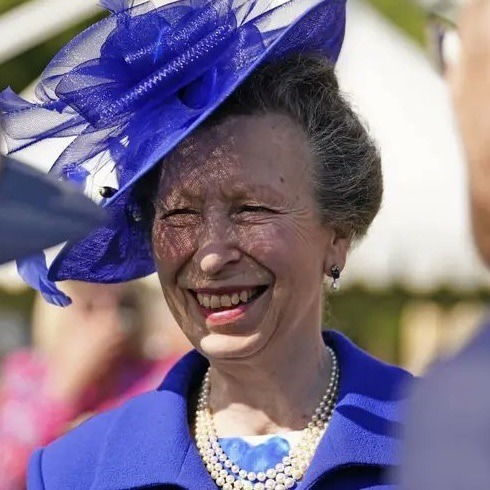



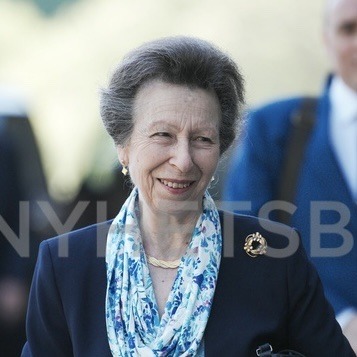
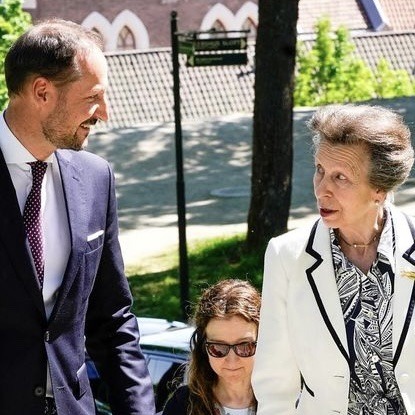
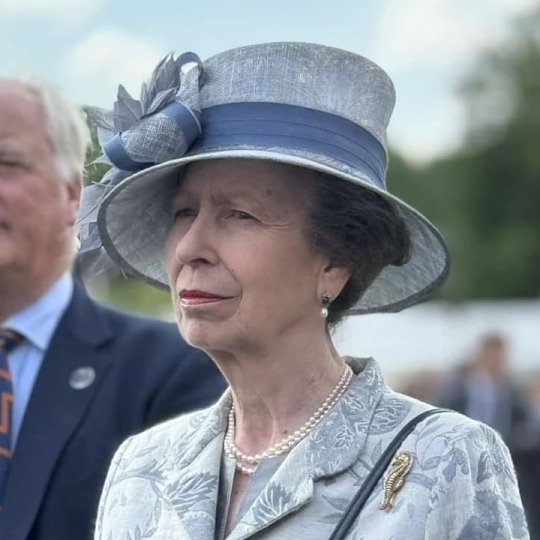
The Princess Royal’s Official Engagements in May 2024
01/05 On behalf of The King, held an Investiture at Buckingham Palace. 🎖️
As President of the City and Guilds of London Institute, attended The Princess Royal Training Awards Alumni Skills Summit at Guildhall. 🏆
With Sir Tim As Patron of the Whitley Fund for Nature, attended the Annual Whitley Awards Ceremony at the Royal Geographical Society. 🦋
02/05 With Sir Tim Named a Great Western Railway Intercity Express Train ‘HRH The Princess Royal’ at Paddington Railway Station. 🚉
Unofficial With Sir Tim Attended day two of the Royal Windsor Horse Show. 🐎
03/05 With Sir Tim Departed the UK from Stansted Airport for Canada and arrived at Vancouver International Airport
HRH, as Commodore-in-Chief of the Royal Canadian Navy (Pacific Fleet), with Sir Tim, carried out engagements in Vancouver;
Attended the Commissioning Ceremony for HMCS MAX BERNAYS at North Vancouver Burrard Drydock, before attending a Reception onboard. ⛴️ 🇨🇦
Attended a Dinner onboard HMCS MAX BERNAYS at sea. 🍽️
04/05 HRH, as Commodore-in-Chief of the Royal Canadian Navy (Pacific Fleet), with Sir Tim, carried out engagements in Victoria;
Toured HMCS Max Bernays at sea. 🌊
Visited Esquimalt Military Family Resource Centre at the Canadian Forces Base Esquimalt. 👪🪖
As President of the Commonwealth War Graves Commission, visited God’s Acre Cemetery and laid a wreath at the Memorial. 🌹
Visited the Maritime Museum of British Columbia Archive. 📜⚓️
Her Royal Highness afterwards visited Fed Urban Agriculture Society Urban Farm, 395 Harbour Road. ��
Attended a Reception given by the Lieutenant Governor of British Columbia (the Hon Janet Austin) at Government House. 🥂
Attended a Dinner given by the Lieutenant Governor of British Columbia at Government House. 🍽️
05/05 HRH, as Commodore-in-Chief of the Royal Canadian Navy (Pacific Fleet), with Sir Tim, carried out engagements in Victoria;
Visited Government House Gardens. 🪴⛲️
Attended the Battle of the Atlantic Memorial Parade at the Parliament Building and laid a wreath at the Cenotaph before taking the salute at the march past of Canadian Armed Forces Veterans, Serving Personnel and Cadets. 🫡
Attended a Royal Victoria Yacht Club Youth Dinghy Regatta. 🛥️
As Patron of the Canadian Therapeutic Riding Association, visited Victoria Therapeutic Riding Association. 🐎
Departed Vancouver International Airport for the United Kingdom. 🇨🇦✈️🇬🇧
06/05 Arrived at Heathrow Airport from Canada 🇨🇦✈️🇬🇧
08/05 Hosted a garden party at Buckingham Palace alongside The King and Queen, The Duke and Duchess of Edinburgh and The Duke and Duchess of Gloucester. 🍃☀️🪴
As Patron of the Woolf Institute, attended a Reception, followed by a Dinner, to launch the Randeree End of Life Programme. 🥂🍽️
09/05 As Patron of the Royal Navy and Royal Marines Charity, visited the Headquarters at HMS Excellent in Portsmouth. ⚓️
As Patron of the Women’s Royal Naval Service Benevolent Trust, attended the Annual Presentation and Reception at the National Museum of the Royal Navy. 🏛️
As Patron of the Association of Wrens, opened the new Headquarters Building at Lanyard House, HM Naval Base. 🫡
With Sir Tim As Patron of the National Museum of the Royal Navy, visited the HMS Victory Conservation Project at HM Naval Base ⚓️
With Sir Tim As Patron of the National Museum of the Royal Navy, attended the HMS Victory Conservation Project Dinner onboard HMS Victory at HM Naval Base. ⚓️🍽️
10/05 As Patron of Catch22, visited Greater Manchester Victims’ Services at Greater Manchester Police Headquarters. 👮
Visited the East Manchester Community Boat Project at Portland Basin Museum Marina in Ashton-Under-Lyne to mark its 30th Anniversary. 🛥️🎂
11/05 unofficial With Sir Tim Went to Badminton Horse Trials to cheer on Zara Tindall in her Cross Country stage of the three day event. 🏇🏼
13/05 Visited Stonehaven Open Air Swimming Pool to mark its 90th Anniversary. 🏊♀️🍾🏴
As Admiral of the Sea Cadet Corps and Marine Society and Sea Cadets, opened Stonehaven and District New Headquarters. ⚓️🫡 🏴
14/05 With Sir Tim As Patron of the United Kingdom Sailing Academy held a Founders’ Club Luncheon at St James’s Palace. ⛵️
As Chancellor of the University of London, attended the King’s Centre for Military Health Research Conference. 👩⚕️
With Sir Tim As Patron of the Wellington Trust, attended a Dinner onboard HMS WELLINGTON (mto mark the Ship’s Ninetieth Anniversary. ⚓️🥂
15/05 As Court Member of the Fishmongers’ Company, visited Glenarm Organic Salmon Fish Farm, off Glenarm Harbour in Ballymena. 🍣🚤
As Court Member of the Fishmongers’ Company, attended a Luncheon at Glenarm Castle. 🐟🍽️🏰
16/05 As Royal Patron of the National Coastwatch Institution, visited Bembridge Station, followed by a Reception at Brading Haven Yacht Club in Ryde, Isle of Wight. 🔍🌊
As President, Royal Yachting Association, opened the Sea View Yacht Club's Training Centre in Seaview, Isle of Wight. 🛥️
17/05 With Sir Tim Hosted the annual Not Forgotten Association garden party at Buckingham Palace. 🫖🍰☀️
20/05 unofficial Departed from RAF Brize Norton for Norway and landed at Oslo Gardermoen Airport. 🇬🇧✈️🇳🇴
21/05 As Patron of the Anglo-Norwegian Resistance Commemoration Project, visited the Norwegian Industrial Workers Museum in Vemork, Norway. 🔨⚙️🇳🇴
As Patron of the Anglo-Norwegian Resistance Commemoration Project, received a briefing on the sinking of DF Hydro at Mael Station in Telemark, Norway. 🏭🇳🇴
Attended a Reception given by His Majesty’s Ambassador to the Kingdom of Norway at the Residence in Oslo. 🥂🇳🇴🇬🇧
22/05 As President of the Commonwealth War Graves Commission, visited Vestre Gravlund Cemetery and laid a wreath on the memorial. 🪦
As Patron of the Anglo-Norwegian Resistance Commemoration Project, visited the Linge Club and attended a Reception at Akershus Fortress, Oslo. 🇳🇴🇬🇧
As Patron of the Anglo-Norwegian Resistance Commemoration Project, visited the Norwegian Shipowners’ Mutual War Risks Insurance Association. 🪖🇳🇴
As Patron of the Anglo-Norwegian Resistance Commemoration Project, with The Crown Prince of Norway, visited the Norwegian Resistance Museum, Akershus Fortress. 🏰 🇳🇴
unofficial Departed from Oslo Gardermoen Airport and landed at RAF Brize Norton . 🇬🇧✈️🇳🇴
23/05 As Patron of the Hornet Services Sailing Club, visited the club for their 60th anniversary. ⛵️🎂
Opened the Army Sailing Association Offshore Centre in Gosport. ⛵️
With Sir Tim & Duke of Kent Held a Garden Party at Buckingham Palace to celebrate the Royal National Lifeboat Institution's 200th anniversary. 🛟☕️
With Sir Tim Visited the Royal Horticultural Society Chelsea Flower Show at the Royal Hospital Chelsea. 🌸🌺🌼💐
24/05 Opened the Admiral Lord Cochrane Room at the Royal United Services Institute in Whitehall, London. 🔐
Sometime in May unofficial Sir Tim, as Chair of Trustees, attended the Science Museum Groups annual dinner
Total official engagements for Anne in May: 53
2024 total so far: 224
Total official engagements accompanied by Tim in May: 23
2024 total so far: 55
FYI - due to certain royal family members being off ill/in recovery I won't be posting everyone's engagement counts out of respect, I am continuing to count them and release the totals at the end of the year.
#a very busy month!!!#i loved her visits to canada and norway!!!#very excited for june!#aimees unofficial engagement count 2024#may 2024#princess anne#princess royal#tim laurence#timothy laurence
41 notes
·
View notes
Text
And this really is a case about the power of government agencies
The Chevron doctrine, it arises from a case, Chevron v. Natural Resources Defense Council, from 1984. And the idea behind the Chevron doctrine is that courts should defer to a federal agency's interpretation of a federal law that it administers as long as that interpretation is reasonable. So even if a court might look at the statute and come to a different conclusion, as long as the agency's interpretation is reasonable, courts should defer to it.
So there are two steps. First, the courts determine whether or not the statute is ambiguous. And if it is ambiguous, then the courts defer to the agency's interpretation.
And the idea is that when Congress writes a law, it may not think of all of the details. It may not have the expertise that a federal agency has. And so that the federal agency can fill in the gaps when it is interpreting the law.
And the Chevron Doctrine has had sort of a target on its back for some time now with conservative lawyers, conservative law professors, who believe that there shouldn't be a deference to any agency's interpretation of the law. That Congress's job is to write the laws, and then it's the job of courts to say what they mean. And so the Supreme Court has had several requests over the last few years to reconsider the Chevron Doctrine, and it turned those down until last year, when it agreed to take up a pair of cases challenging a regulation issued by the National Marine Fisheries Service that requires a fishing boat to pay for the costs of having an observer come on board and stay on board to monitor the boat's compliance with fishery regulations to make sure that they are not overfishing.
So basically, this would shift power, right from agencies to basically to Congress and judges.
With the caveat that because Congress is having a hard time doing much of everything, what it really does is shift power directly to courts. And as I said, I think it is of a piece with this broader theme that the court, this present court has come up with. We have things like the Major Questions Doctrine, which is a doctrine that sort of doesn't have roots in the Constitution, doesn't even have a long history as an interpretive issue, but the court has been invoking it in recent years, again, to do the same thing, which is to say Congress has to be incredibly, incredibly, incredibly, incredibly specific in laying out how a statute is gonna do what it does.
And if it fails to be specific, then it's not a good statute. And we've seen a whole bunch of things. In the very recent past, we've seen the court hobble the EPA's ability to do what it wants to do, invoking the Major Questions Doctrine.
It's another version of the Chevron deference, which is a claim by the court that if Congress wants to do something, it has to do something so, so specifically that there's no ambiguity. And as Chevron does, Chevron suggests that if there is ambiguity in a statute, then you go ahead and you defer to the agency itself, presumably with all its expertise and its scientists and its understanding of how we go about regulating. This is an effort to say, nope, that's not good enough either.
And so what it really effectively does, whether under the guise of Chevron deference or the major questions doctrine, is it spikes authority either back to Congress to fix regulations, or as we're seeing happen in real time, it simply spikes authority right back to the courts. And it arrogates to the courts the power to decide all sorts of public health questions. Last year, the court started to decide what Swampland was under the Clean Water Act, what emissions are under the EPA regulations, what health protections are under COVID.
And so it's really a massive arrogation to the court to do a whole bunch of things that at least some critics say the court doesn't have the kind of technical expertise to do.
And I think that you do have a feeling coming again from some of the justices, that school boards don't know what they're doing, that entities that give out gun licenses don't know what they're doing, that the justice department is all in the tank for Joe Biden and against Donald Trump. So at every single level of government, you're hearing the court raising questions. Last two weeks ago, it was ATF and bump stocks, right?
And I think one of the things that's been so destabilizing to this particular court, in addition to the ethics claims and the claims that it's off the rails in terms of personal conduct of some jurists, is that when you are overturning precedent willy-nilly, as they did in Dobbs, as they did in Brew in the Gun case, as they've been doing in case after case, the American public, separate and apart from the idea that the justices, some of them are unethical, start to have real doubts about whether this court is just a political branch that changes its mind based on political composition. And that's the worst possible outcome for the court. And yet I think that separate and apart from judicial conduct, we are in a deep, deep moment of doubt about the court as anything other than what looks like now to be a political branch that's just kind of changing the law as it goes along.
—The Dangerous Impact of This Supreme Court’s Decisions
#politics#scotus#chevron deference#chevron v nrdc#major questions doctrine#power grab#republicans#chevron doctrine#shadow docket#roberts court#john roberts#federal authority#governmental authority
28 notes
·
View notes
Text
New York state has enacted a bill to extort fossil fuel companies in the name of climate change. Governor Kathy Hochul believes the bill will generate $75 billion in funds for the state over the next 25 years, which she claims will be used to fight climate change.
Why would any energy company want to operate out of New York? The fines for merely existing are unclear, but the New York Department of Environmental Conservation will begin determining the extent of each company’s greenhouse gas emissions. Worse, they will begin fining companies for the amount they began releasing 24 years ago in 2000. ANY company that the department deems “responsible” for greenhouse gas emissions is subject to a fine.
Vermont was the first state to enact such a law under the Climate Superfund Act. Oil and energy companies are mandated to pay into a climate change fund if they have released over 1 billion metric tons of greenhouse gases from 1995 – nearly 30 years ago – until now.
“This bill represents a major step forward in ensuring that responsible parties, like Big Oil – companies like ExxonMobil and Shell that have known for decades that their products are disrupting the climate – be required to also pay a fair share of the cleanup costs,” the Vermont Natural Resources Council said after blaming the industry for the catastrophic flooding that occurred earlier in the year.
American Petroleum Institute declared that this tax unjustifiably violated due process of rights. Society at large is dependent on fossil fuels, but these taxes aim to extort profitable companies that have been providing a service to the public. Both Vermont and New York have also failed to explain how they will calculate emissions or the true costs involved.
Imagine if the government told you that you needed to pay additional taxes spanning back decades. This is absolute insanity and yet another brain-dead policy aimed at punishing fossil fuels. Stepping on the neck of a crucial sector is not how to generate state revenue. Anyone cheering that these laws punish Big Oil fails to understand that these fees will simply be passed down to the consumer as residents of New York and Vermont should expect to pay more in energy costs in the near term.
9 notes
·
View notes
Text
Ok sooo, I can’t stop thinking about the line from this post [here] by @swordfright , “Sam is a builder and dream is the ultimate engineering project: challenging (psychologically taxing to guard), important (to the stability of the server), rewarding (on those sporadic occasions when dream obeys him without question), and ceaseless (because the ideal prisoner always needs a warden to keep them in line.)” Because the idea that Dream is Sam’s “ultimate engineering project” really got me thinking about the definition of the duties of an engineer as per the Code of Ethics, which I studied in college.
As an engineer it is basically our responsibility to maintain sustainable development, which The National Society of Professional Engineers (NSPE) defines [here] in the Code of Ethics as, “meeting human needs for natural resources, industrial products, energy, food, transportation, shelter, and effective waste management while conserving and protecting environmental quality and the natural resource base essential for future development.” Even further, as a civil engineer (which I am and Sam is as a primary builder) it is our job to help provide the infrastructure and necessities to life, (shelter, water and by extension food +) with civil engineering encompassing the engineering fields of Structural (bridges, buildings, dams… etc), Utilities (power, gas, water, waste water… etc), Geotechnical (analyze and maintain that the ground can support projects), Environmental (protecting the stability of the environment like for example protecting the habitat of an endangered species), Transportation (roads for cars, train tracks, airplane runways… etc). Pretty much the necessities of civilization (lol hence civil). And I found this interesting because it is Sam’s job as the warden to provide the fundamental and basic necessities of Dream’s life in every way. So, in this way Dream would actually be the society Sam’s engineering is meant to benefit from and depends on (which he obviously denies and uses to abuse.)
But on the other side, interestingly a 2004 definition, [found here] of civil engineering based on Thomas Tredgold’s 1828 original is, “the art of working with the great sources of power in nature for the use and benefit of society”. And oh, the use of power here could very well be a good representation of Dream, making him actually the engineering project. Further, The NSPE Code of Ethics states, “Engineering has a direct and vital impact on the quality of life for all people. Accordingly, the services provided by engineers require honesty, impartiality, fairness, and equity, and must be dedicated to the protection of the public health, safety, and welfare.” In this sense, Sam’s position as the warden was dedicated to the protection of the public health, safety, and welfare, which by keeping Dream locked up, weakening him physically and mentally he was in essence trying to protect the server as well as working to strip the sources of power Dream had over everyone. And when his methods didn’t work, he let Quackity in, which funnily enough goes along with one of the The Institute of Industrial and Systems Engineers (IISS)’s summarizing stated [here] fundamental canons, “Engineers shall perform services only in the areas of their competence.” And clearly Sam was not competent in getting the book from Dream, so he teams up with Quackity, his contractor, to finish the project as is typical in the engineering industry.
All this to say, that Sam as an engineer, while not sworn to follow a defined code of ethics, still followed the general defined duties of engineering and strived to work for the betterment of the server. A personality and behavior, that Dream saw in him as they grew as friends and worked to build the prison - Sam’s passion for helping, to provide for and develop the necessities of society. His passion for wanting to use his skills to improve the world and help people. His strong principles of dependability, efficiency, justice, work ethic. If Sam was given a job to help people he was going to see it through to the best of his ability. He would not abandon his post, he would protect and serve the common good. - His strong engineering attitude made him a good choice in Dream’s mind for the warden, because of these qualities, which makes sense. What Dream did not realize is that he was not included in the society and all people Sam felt obligated to serve and provide for.
Instead, Dream was but a resource of power - the revival book - needing to be made efficient and accessible, so that everyone could benefit and share that power. Dream thought he’d be provided for and taken care of, but he was the project instead. Sam’s “ultimate engineering project” he deemed too damaged like a bumpy road or crumbling building that wasn’t worthy of patching and filling in the cracks or reinforcing, that’s too eroded to be fixed and preserved. So, Sam strived to tear him down to the bedrock so he could remake, remold, and reengineer Dream according to his design for the common safety, public health and well-fair. He was such a good engineer just like Dream knew he would be, he just forgot the whole teeny weeny ethics part of being an engineer that kind of comes with the job description… Oh well. ;)
#poor dream depending on his engineer to keep him safe and being let down in the biggest of ways#he ran from a war to a building and trusted it to keep him safe but it collapsed instead destroying him…..#did I make sense…. I’m not sure I got my thoughts across..#hmm oh well words are hard sometimes…#c!dream#dsmp#dreblr#dream smp#pandora's vault#dsmp analysis#c!sam#c!sam and c!dream#flora favs#this is fine#did someone order an essay?#welll… blame swordfright for giving me brain rot… lol XD#pandora’s vault has a singular purpose#probably gave you way more engineering info than you wanted but… of well lol <3 :)#oh sam… never ceases to break my heart…#sam the most unethical engineer and he didn’t even steal more from the government#or bribe or cut corners he just straight up neglected the fact that all people includes all people…
40 notes
·
View notes
Text

Excerpt from this press release from the Department of the Interior:
The Department of the Interior’s U.S. Fish and Wildlife Service, Parks Canada, Environment and Climate Change Canada and Mexico's Secretariat of Environment and Natural Resources recently signed a new agreement to strengthen cooperation and coordination for the conservation of the American bison across its range in North America. Through a Letter of Intent, the countries will work to pursue bison conservation, restore ecological processes, and support traditional human use of natural resources with a particular focus on the unique historical connection between bison and Indigenous peoples.
This Letter of Intent was worked on at the recent Canada/Mexico/United States Trilateral Committee for Wildlife and Ecosystem Conservation and Management held in San Diego, California and outlines additional collaboration across national borders towards the United States, Mexico and Canada’s shared goal of domestic bison conservation. The Trilateral Committee began in 1996 as a pioneering initiative among the three countries to align efforts safeguarding North America’s wildlife and ecosystems. The committee’s Species of Concern Working Table brings together state, federal and Tribal resource managers and non-governmental organizations to share their expertise and coordinate conservation of species that span the continent.
The recently signed Letter of Intent outlines the various ways that the three North American nations will work together, including by:
Improving collaboration on regional activities to promote policies, practices and effective methods in support of the ecocultural conservation of bison;
Promoting joint work plans within the Trilateral Committee’s Species of Common Conservation Concern working table;
Fostering transparency about the technical information that is developed jointly; and
Streamlining reporting on activities conducted under the Letter of Intent with the Executive Table of the Trilateral Committee for its review.
These international efforts will continue to build on the Interior Department’s domestic bison restoration efforts, including the Grasslands Keystone Initiative. In 2023, Secretary Haaland issued a Secretary's Order and announced a $25 million investment to empower the Department’s bureaus and partners to use the best available science and Indigenous Knowledge to help restore bison across the country. The Order formally established a Bison Working Group (BWG) composed of representation from the five bureaus with bison equities: the Bureau of Indian Affairs, Bureau of Land Management, U.S. Fish and Wildlife Service, National Park Service, and U.S. Geological Survey. The BWG is developing a Bison Shared Stewardship Plan, which will establish a comprehensive framework for American bison restoration, including strengthening long-term bison conservation partnerships. Central to the development of that plan will be robust engagement with Tribes, including prioritizing Tribally led opportunities to establish new large herds owned or managed by Tribes and Tribally led organizations.
The American bison once thrived across the largest original distribution of any native large herbivore in North America, ranging from desert grasslands in northern regions of Mexico to interior Alaska. After North America’s European settlement, bison populations were reduced from an estimated 60 to 80 million to a mere 1,000 animals. These surviving bison were saved from extinction and became the founders of several protected populations that put the species on a path of recovery and conservation.
Today, bison remain absent from nearly 99 percent of their historic range. Most of the bison in North America are in herds that are constrained by fences, isolated from each other, and have fewer than 1,000 individuals, raising concerns about their genetic integrity, wildness and long-term viability of the species.
Approximately 31,000 bison are currently being stewarded by the United States, Canada and Mexico with the goal of conserving the species and their role in the function of native grassland systems, as well as their place in Indigenous culture.
45 notes
·
View notes